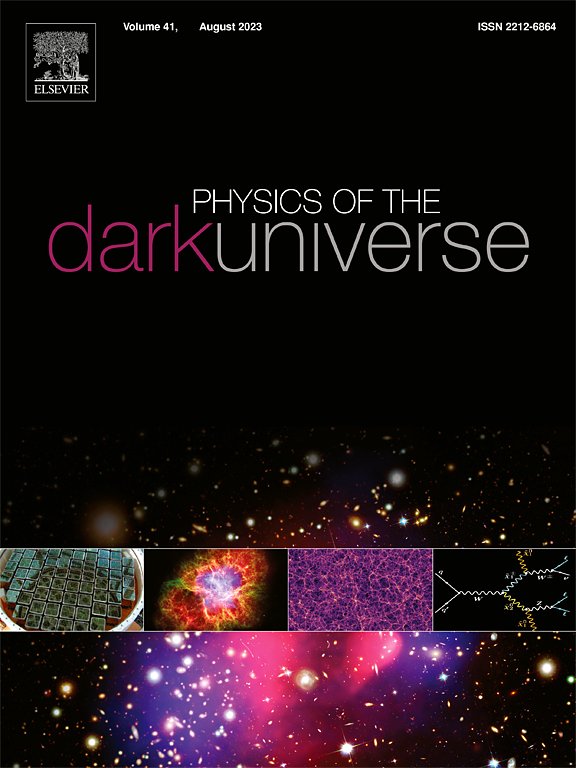Fuzzy dark matter fails to explain dark matter cores
IF 5
2区 物理与天体物理
Q1 ASTRONOMY & ASTROPHYSICS
引用次数: 0
Abstract
Ultrafaint dwarf galaxies (UFDs) are ideal for studying dark matter (DM) due to minimal baryonic effects. UFD observations suggest cored DM profiles. We find that the core radius–stellar mass scaling predicted by fuzzy dark matter (FDM) is at tension with UFD observations. Combining observations from 27 UFDs, the required FDM mass is also in conflict with existing Lyman- bounds. Our results suggest that FDM cannot provide a consistent explanation for DM cores and imply at to CL.
模糊暗物质无法解释暗物质核
超小矮星系(ufd)由于重子效应极小,是研究暗物质的理想选择。UFD观察提示核心DM剖面。通过UFD观测,我们发现模糊暗物质(FDM)预测的核心半径-恒星质量尺度在6.1σ张力。结合27个ufd的观测结果,所需的FDM质量ma=3.2−0.6+0.8×10−21eV也与现有的Lyman-α界相冲突。我们的研究结果表明,FDM不能为DM核心提供一致的解释,并暗示ma>;2.2×10−21eV在2σ CL。
本文章由计算机程序翻译,如有差异,请以英文原文为准。
求助全文
约1分钟内获得全文
求助全文
来源期刊

Physics of the Dark Universe
ASTRONOMY & ASTROPHYSICS-
CiteScore
9.60
自引率
7.30%
发文量
118
审稿时长
61 days
期刊介绍:
Physics of the Dark Universe is an innovative online-only journal that offers rapid publication of peer-reviewed, original research articles considered of high scientific impact.
The journal is focused on the understanding of Dark Matter, Dark Energy, Early Universe, gravitational waves and neutrinos, covering all theoretical, experimental and phenomenological aspects.
 求助内容:
求助内容: 应助结果提醒方式:
应助结果提醒方式:


